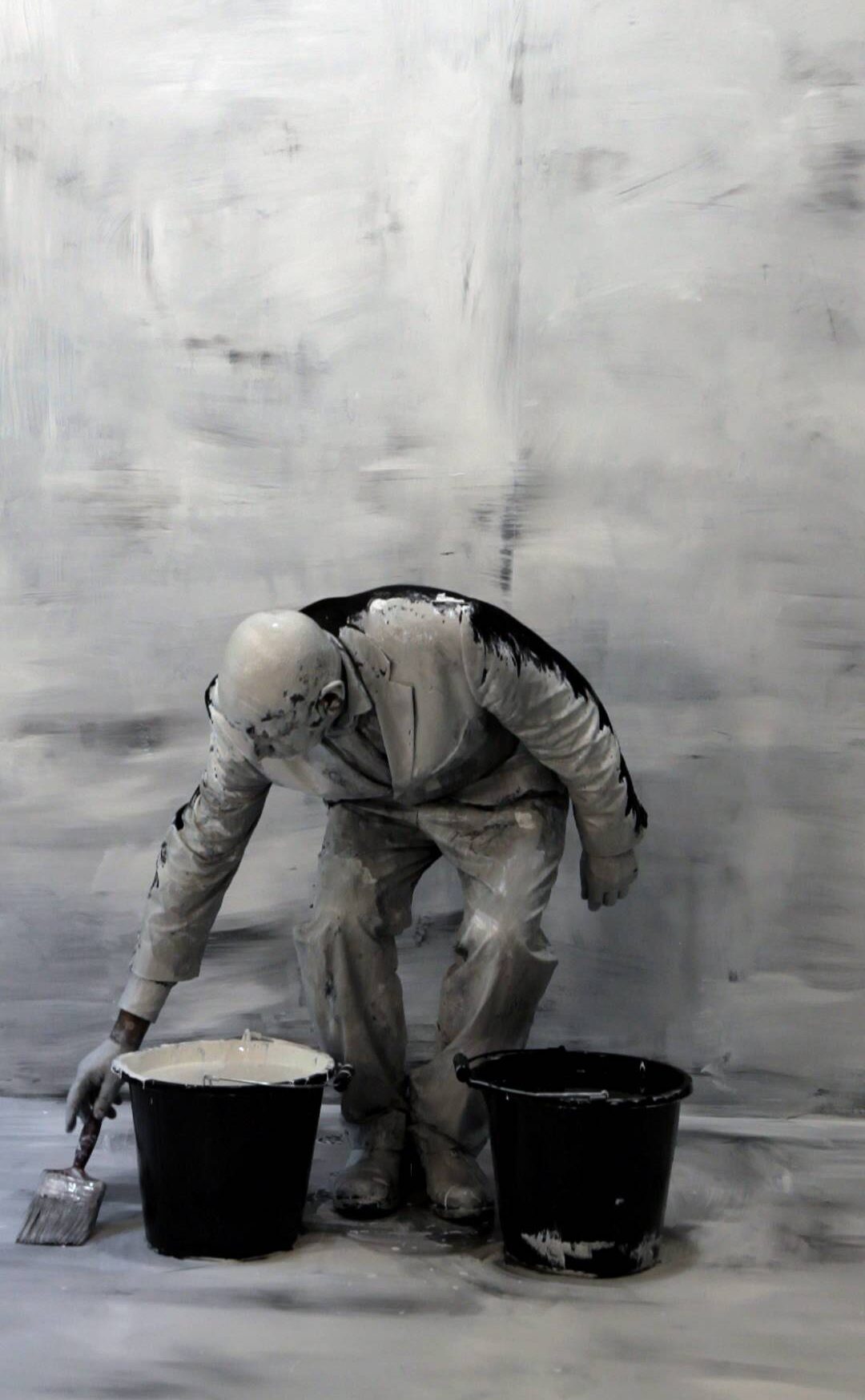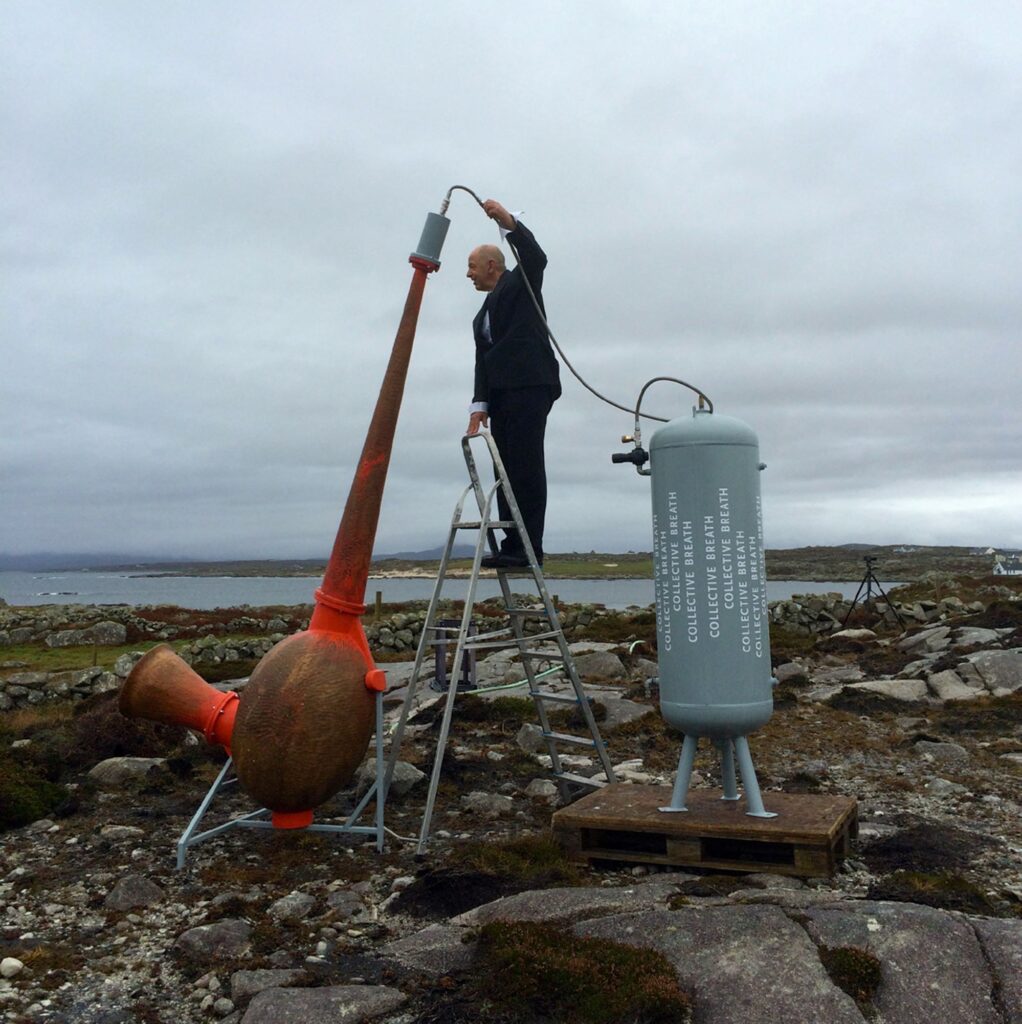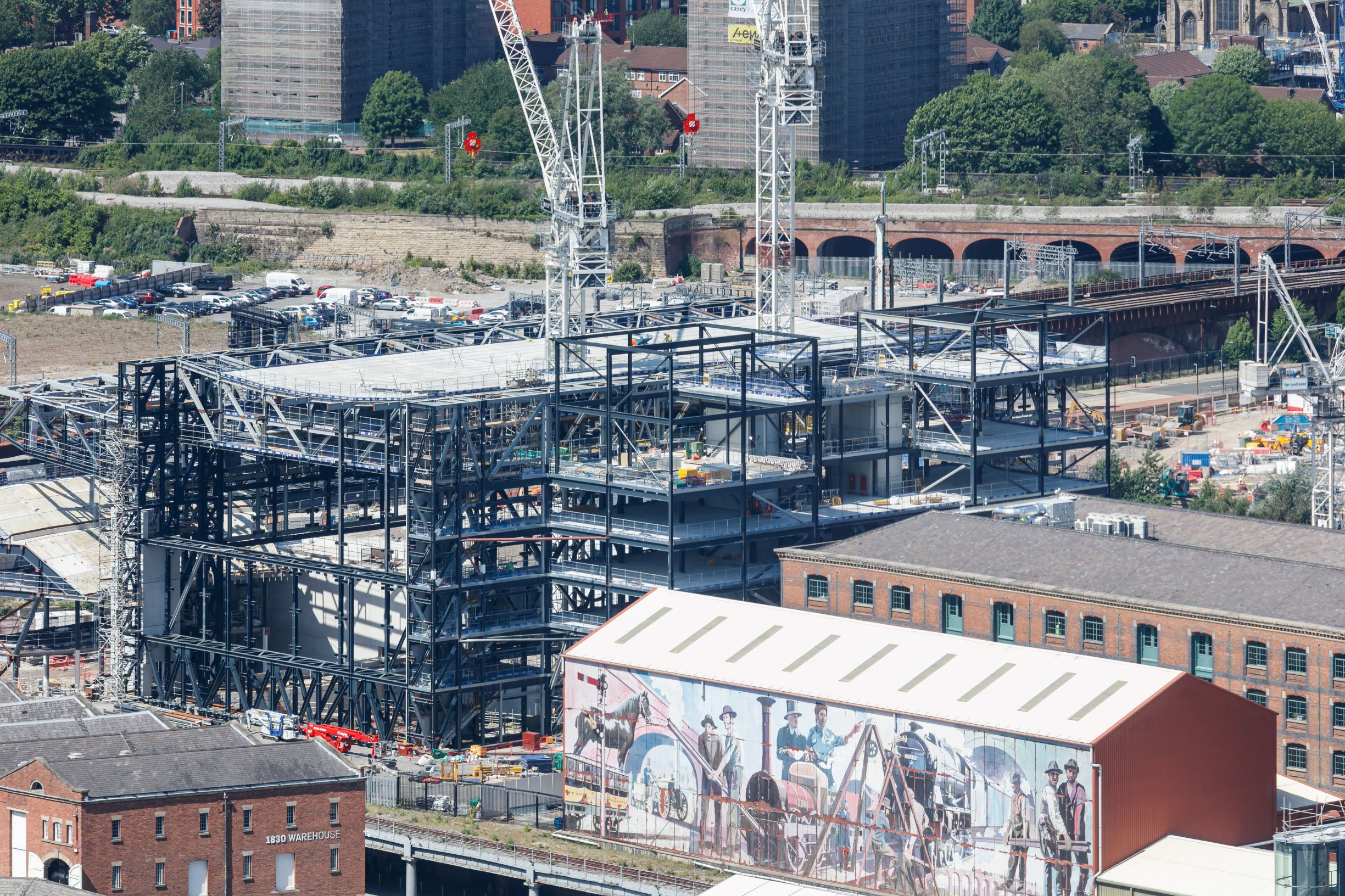Introducing... Neville Gabie

Introducing… Neville Gabie
Internationally acclaimed artist Neville Gabie will be working with us to capture the stories of the construction workers, concrete pourers, steel workers, and many others involved in building The Factory, the world-class arts space that will be our future home.
From China to Antarctica, Neville has taken on durational projects all over the world, including the construction of the Olympic Park, London (2010/2012).
With a background in sculpture, Neville’s practice includes performance-based work, sound, film and photography and evolves through building sustained and close relationships with groups and communities.
Neville will be discussing The Factory project alongside MIF Creative Director, Mark Ball at MIF’s Artist Drop-In on Thursday 3 December, 6pm over Zoom.

Olympic Park London – Artist in Residence – 2010/12
How would you describe your work?
I think ultimately my work is really about situation, context and community. Whether I use film, sound, photography or sculpture my work is entirely shaped by the situation in which I find myself working.
My work is really about situation, context and community... Neville Gabie

Experiments in Black and White video still – 2012
When did you first become interested in community-based, site-specific art?
In 1986 I went to study sculpture at the Royal College of Art in London. When I first arrived, I went for a walk around London and I found a rubbish dump where people were fly-tipping stuff out of skips, right along the train line into Kings Cross. There were loads of materials there and I had nothing in my studio, so I started making things from what I found. I started making these domestic spaces in the middle of this rubbish. I became conscious of the passing train and the people whizzing past who were, in a way, my audience. I started thinking about how you engage with an audience and what you could do so that someone whizzing by on a train would get a glimpse of something and think, ‘oh, what was that?’
From that point on, although I was still very much a maker, the making was really shaped by its context, the community of people around it and the audience. Neville Gabie
I started making all these little homes and then one day I found a sold sign planted in the middle of one of my little constructions. I realised that, at night, lots of homeless people were going there. From then on, I started making something during the day, and they would alter it at night. There became this dialogue between myself and this group of people who I never actually met. I started thinking very clearly about engagement and how you build a dialogue with people you don’t know, who might not have encountered art before. From that point on, although I was still very much a maker, the making was really shaped by its context, the community of people around it and the audience. From that point on, I really started making work which was in specific environments, contexts, and within specific communities of people.
How important is it for you to build sustained relationships with the communities you work with?
If you’re going into somebody’s space, you need to build a relationship of trust. You make a social commitment in a way. It’s more than a commitment actually… you make friends.
If you're going into somebody's space, you need to build a relationship of trust... you make friends Neville Gabie
In 1999 I was artist in residence at Tate Liverpool. I found these tower blocks in the north part of the city very near the football grounds which were due to be demolished. I got permission to work in one of the flats so I contacted a couple of other artists and we set up a project there which ran for six years, called Up In The Air. In all, 25 artists and writers lived in the building for periods of time including Will Self, George Shaw and Marcus Coates. We were working in this tower block alongside residents who had very little experience of art. Building a close relationship with the community of residents was key to the project’s success. The residents became totally involved in selecting the artists that came and lived there. It’s 15 years since I finished that project in Liverpool but I know I can drive straight to Sheffield Park and knock on the door and have a chat with Maureen and Josie and we’ll pick up exactly where we left off.
Once you finish an artwork, does that work then belong to a specific time, place and community or can it be reinterpreted in different contexts?
The journey is the fantastic part and the challenge is always how you share that when you’re producing a finite artwork.
If you're making something which is very specific and it's going to be moved, you need to think about how to move it in a way which is sensitive to the work and any new situation. Neville Gabie
For example, there was an exhibition in Germany called Shrinking Cities who came to have a look at the project we’d been doing in the tower block in Liverpool and they absolutely loved it. But we felt that actually to cherry-pick work and remove it out of the building was entirely the wrong way of seeing that work. It was all to do with space and place.
We did participate in the exhibition in the end but what we did was rebuild an exact replica of our tower block office space in Berlin and we filled it with the archive of artists’ work.

Collective Breath – WOMAD – 2014
If you’re making something which is very specific and it’s going to be moved, you need to think about how to move it in a way which is sensitive to the work and any new situation.
What excites you about The Factory?
The building of The Factory is such a special and momentous thing to happen for Manchester and for the wider Festival – and to work with MIF is fantastic.
One of the site managers described it as a giant piece of meccano. Neville Gabie
When I started visiting The Factory construction site it was unlike any building site that I’d ever been to before – in that everything is made off-site. One of the site managers described it as a giant piece of meccano. I quickly realised that I couldn’t make a piece of work just about that little area of The Factory site. I started thinking about all those different suppliers in Sowerby Bridge, Bury, Worksop and further afield who have really instrumental yet invisible roles in what’s happening in Manchester city-centre. For example, a workforce supplying bits of rubber to sound insulate The Factory has no real connection to the project as a whole. It’s a contribution that no-one is going to see or even know exists. The work is absolutely central to what The Factory needs but it’s invisible to most people. What I really want to do is make those connections tangible by visiting those different places, finding out who those people are, what their workforce is like, and how they are contributing their own crucial components to The Factory.

The Factory build May 2020 image credit Pawel Paniczko
As work on The Factory progresses, Neville intends to highlight the broad range of people, professions, and environments from across the region that go into constructing a world-class cultural space of this scale.

